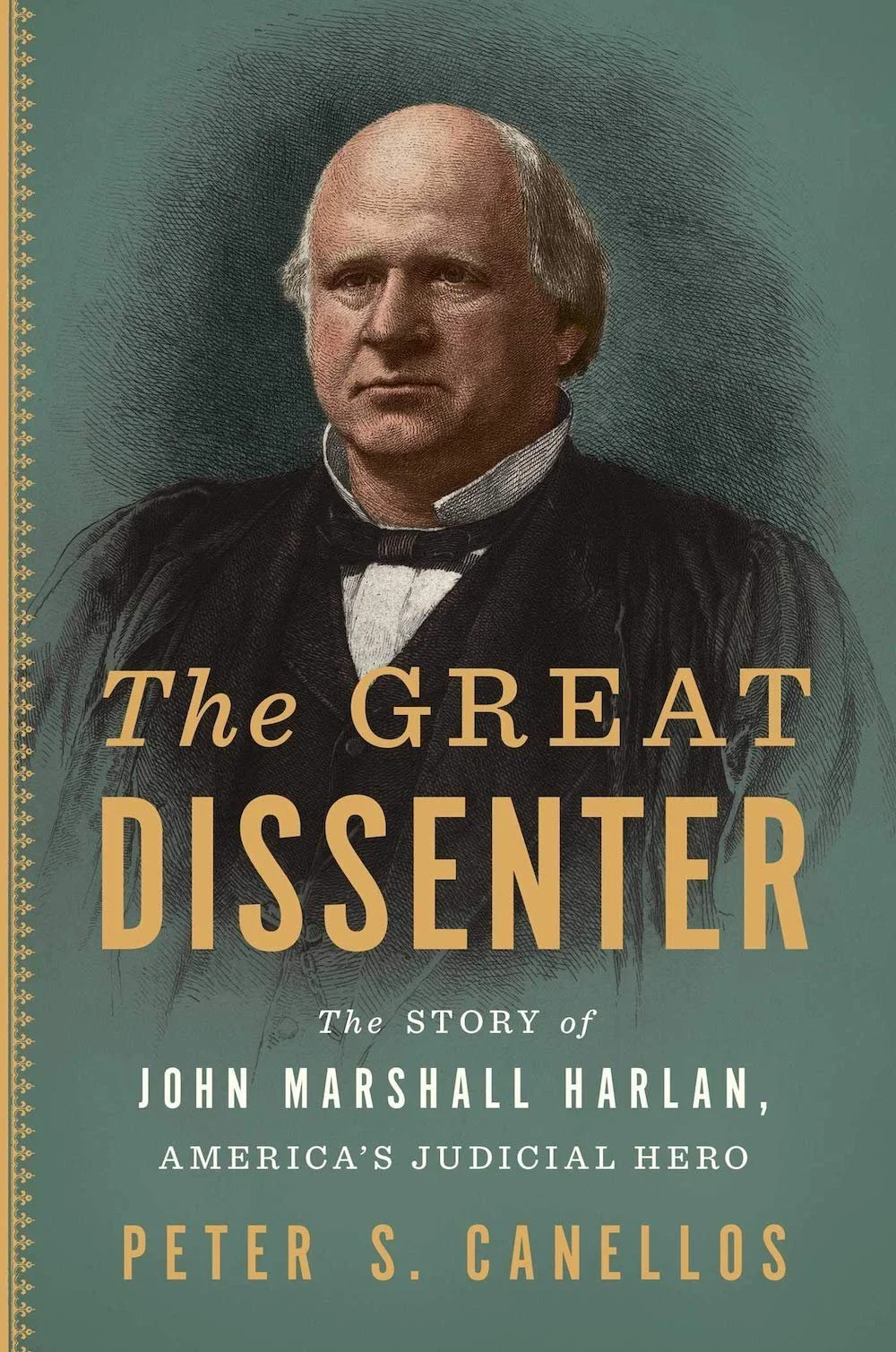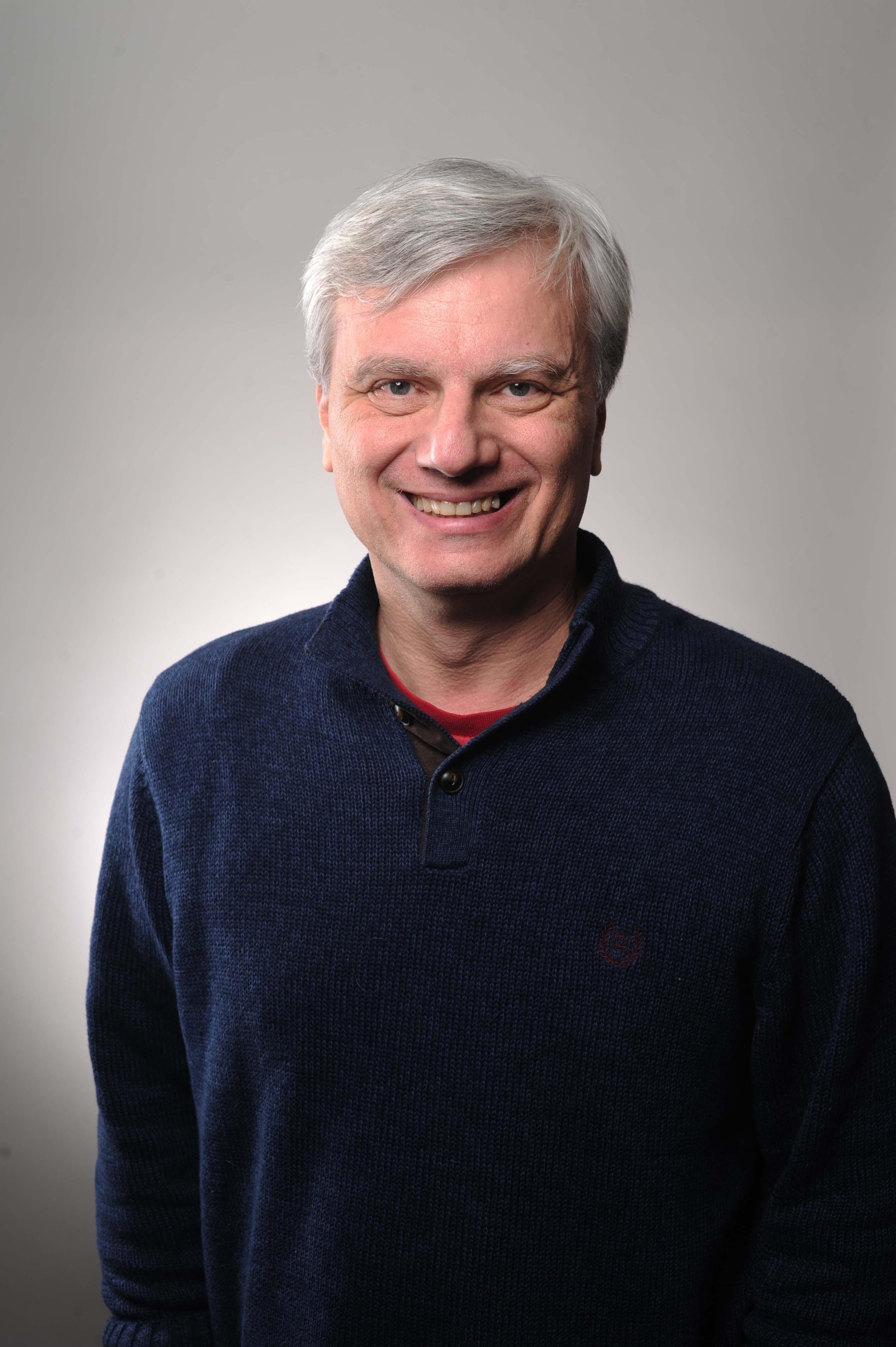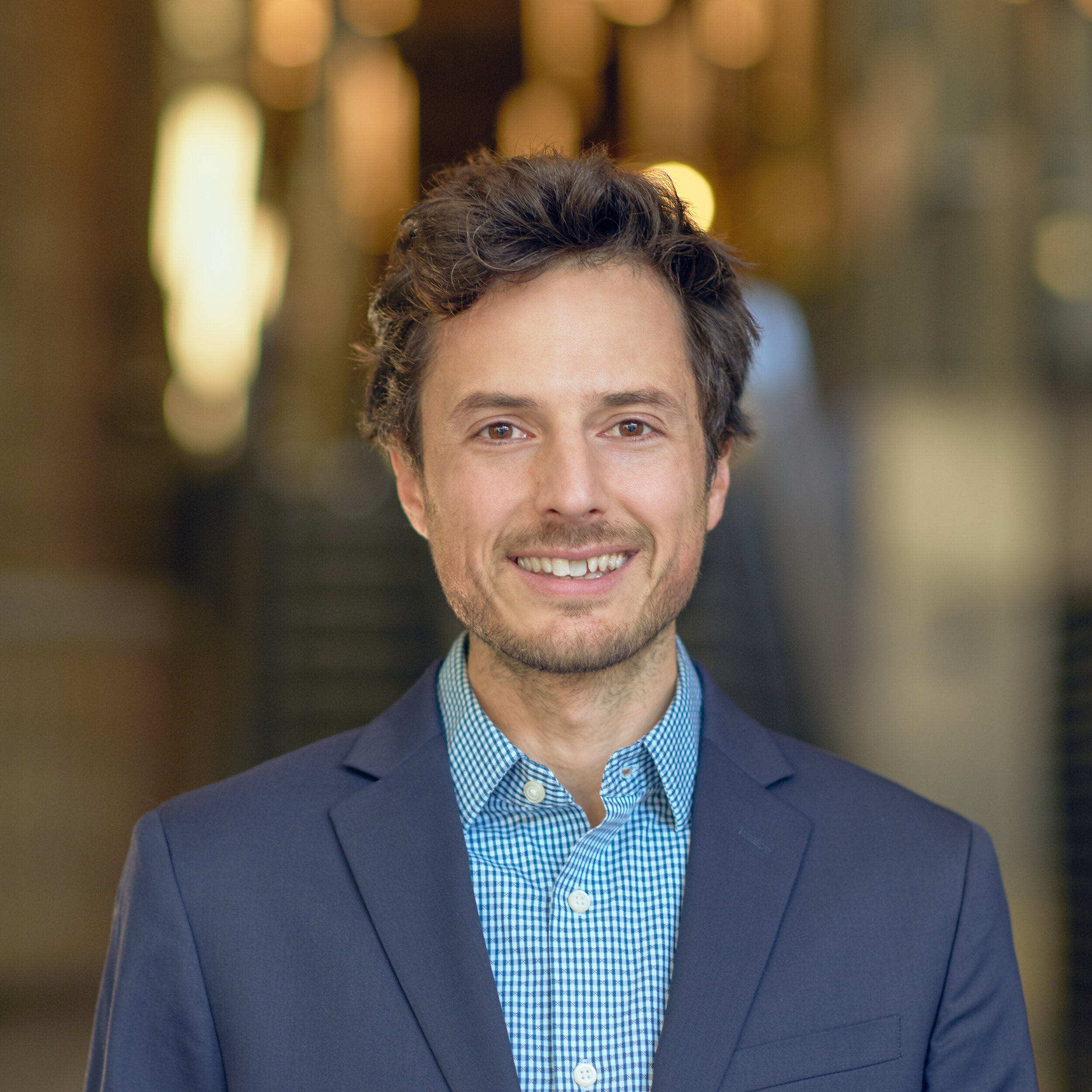This article was originally published on Religion Unplugged on January 21, 2022.
John Marshall Harlan. Photo via Mathew Brady or Levin Handy — Brady-Handy Photograph Collection (Library of Congress).
(REVIEW) When former President Rutherford B. Hayes appointed John Marshall Harlan to the Supreme Court in 1877, anti-slavery Republicans mistrusted him, calling him “the sycophantic friend and suppliant tool” of White supremacists. Harlan had been born into a slaveholding family in 1833, and he was the lone Southerner on the court.
To the surprise of his critics, Justice Harlan turned out to be the sole defender of civil rights in a series of Supreme Court cases that sharply limited the scope of the civil rights of Black Americans. Today, we read Harlan’s dissents as authoritative interpretations of the Constitution, and we repudiate the racist logic of many of the decisions of Harlan’s judicial contemporaries. How did Harlan get so much right at a time when his colleagues were getting so much wrong?
At an online book talk organized by the King’s College in New York, Politico editor Peter Canellos said that his interest in the life of John Marshall Harlan was a “search for the roots of wisdom in the law.”
“What makes Harlan wise in the estimation of history?” Canellos asked. “What made his colleagues unwise?”
Peter Canellos
Canellos has a law degree from Columbia University, and he covered the nominations of Samuel Alito and John Roberts to the Supreme Court for The Boston Globe. His legal and journalistic training have equipped him to write “The Great Dissenter,” an engaging, popular and accessible book on Harlan and his jurisprudence.
Canellos said that Harlan’s distinctive value system lay behind the differences between Harlan and his colleagues on the court. Harlan was a deeply religious man who served as an elder in the Presbyterian church, and he brought to his work a conviction that he was tasked with doing God’s will on Earth. He was not afraid to stand as a lone dissenter in cases to which he perceived his colleagues to be morally blind. In a letter to Harlan, Frederick Douglass wrote, “One man with God is a majority.”
A second source of Harlan’s moral courage was his commitment to the ideals of the Founding Fathers. American democracy was a great experiment in a world full of monarchs and authoritarians. He felt the wisdom of the Founding Fathers akin to a secular religion. He believed that a court that lived up to the spirit of America’s founding documents would ensure that all people who lived under the American flag were treated equally before the law.
A third source of Harlan’s morality was his personal experience. He grew up in a family steeped in reverence for the law. He was the son of a prominent Kentucky lawyer and politician, and his father groomed him early in life to follow in his footsteps. John had a probable Black half-brother, Robert Harlan, whom his father brought up as a member of the family. In the face of Promethean odds, Robert thrived as a businessman, entrepreneur, politician and philanthropist. John’s relationship with Robert inoculated John from internalizing prevailing cultural concepts of Black inferiority.
The Great Dissenter
Peter Canelloss, “The Great Dissenter,” Simon and Schuster, 2021.
In the civil rights cases of 1883, Harlan broke with his colleagues when the court ruled that the 14th Amendment applied only to the actions of state governments. In his dissenting opinion, Harlan argued that business owners who perform public functions should be subject to Congress’ power to enforce the 14th Amendment.
Harlan wrote his dissenting opinion using the inkwell with which former Chief Justice Roger Taney wrote Dred Scott v. Sandford (1857) — a case that Harlan considered to be America’s original judicial sin. It appalled Harlan that the same court that upheld Congress’ power to force private individuals to turn over runaway slaves in Dred Scot would now deny Congress’ power to prevent racial discrimination against freed men and women in places of public accommodation.
In Plessy v. Ferguson (1896), eight Supreme Court justices set up the legal structure for Jim Crow by upholding a Louisiana law that mandated separate railroad cars for Black customers. In his dissent, Harlan wrote, “In the eyes of the law, there is no superior, dominant ruling class of citizens in this country. There is no caste here. Our Constitution is color blind and does not know or tolerate classes among its citizens.”
Peter Canelloss, “The Great Dissenter,” Simon and Schuster, 2021.
In 1906, Harlan intervened in the case of Ed Johnson, a Black man from Kentucky who was convicted of raping a White woman at night in a cemetery even though the victim testified that she wasn’t sure her assailant was Black. Harlan ordered a stay of Johnson’s execution.
A White mob responded to Harlan’s ruling by descending on Chattanooga’s jail and dragging Johnson from his cell. The mob murdered Johnson and pinned a note to his dead body, saying, “To Chief Harlan, Here is your Negro.” Harlan convinced his fellow justices to try for contempt local court officials in Chattanooga who failed to protect Johnson. This resulted in the first and only time in history that the Supreme Court functioned as a criminal trial court.
At the height of the Gilded Age, Harlan continued his dissents. He defended legislative efforts to break up corporate monopolies, institute an income tax and protect children and other exploited workers. Harlan’s colleagues on the court were corporate lawyers whose commitment to economic freedom precluded government intervention to protect labor rights.
In the 1901 cases on the status of U.S. territories acquired in the Spanish-American War, Harlan sought to extend full legal protections to people of newly acquired territories in Hawaii, the Philippines and Puerto Rico. He warned that the court must not treat people who live under the American flag as “subjects” or “dependent peoples” lest it “engraft on our republican institutions a colonial system … abhorrent to the principles that underlie and pervade our Constitution.”
In Berea v. Kentucky (1908), Harlan issued one of his most anguished dissents. An abolitionist preacher had founded Berea College in 1855 to educate Black and White men and women side-by-side, in a state of biblical unity. In 1904, the Kentucky legislature passed a bill to prohibit Black and White students from attending the same institution, public or private. Berea College challenged the law, arguing that it violated its property rights and constitutional liberties.
The Supreme Court upheld Kentucky’s prohibition as a reasonable application of the state’s police powers, citing the state’s interest in preventing racial commingling. Harlan’s dissent rang with righteous indignation. “The capacity to impart instruction to others is given by the Almighty for beneficent purposes, and its use may not be forbidden or interfered with by government,” Harlan wrote. “The right to impart instruction ... is beyond question part of one’s liberty as guaranteed … by the Constitution of the United States.”
Robert Harlan
Robert Harlan was probably the most important influence of John’s views on racial equality. Robert was 16 years older than John. In John’s eyes, Robert loomed as a fearless man of action. Robert’s refined cultural interests and entrepreneurial successes shaped John’s perceptions of what Black Americans could achieve in an atmosphere of freedom.
Because he was African American, Robert was prevented from pursuing a formal education. Instead, he had to navigate from a young age the rough and tumble rituals of frontier life. At various times in his life, Robert succeeded as a horse racing impresario, a gold rush entrepreneur, a financier of Black businesses, a world traveler and an elected member of the Ohio House of Representatives.
Robert opened a store in San Francisco during the California gold rush, and he returned to Kentucky with a fortune, which he invested in businesses in the free state of Ohio. Robert helped finance the first public school for Black children sanctioned by the Cincinnati school board. He also held the lease on the Duma House, a hotel that was the “beating heart of the Cincinnati Black community, honeycombed with hiding places for runaway slaves.” When John Harlan was nominated to the Supreme Court, Robert helped galvanize Republican support for his appointment.
With his large house, fashionable clothing and biracial heritage, Robert became a representative of America’s aristocrats of color. When traveling, Robert and his influential Black friends — such as Frederick Douglass, Louisiana Governor P.B.S. Pinchback and Howard Law School founder John Mercer Langston — would stay in one another’s homes and host lavish dinners. Robert raised his children in a world of cosmopolitan sophistication, community service, political activism and appreciation for the arts. As John was resisting the legal threats to Black rights on the high court, Robert was fighting in the Ohio legislature to protect Black Americans’ access to inns, restaurants and public transportation. The New York World stated that Robert’s influence in Black America rivaled that of Douglass.
During his lifetime, John Harlan was dismissed by many White Americans as an eccentric outlier. However, Black Americans responded enthusiastically to the justice whom they considered to be their sole ally on the Supreme Court. When Harlan died in 1911, Black congregations around the country organized spontaneous memorial services. The massive Metropolitan African Methodist Episcopal Church in Washington hosted a multi-faith service in which Harlan’s Plessy dissent was read aloud.
“When the spirit of John Marshall Harlan left its temple of clay last Saturday morning, a great light went out,” proclaimed the Washington Bee. “An entire race, today, is weeping because ... a friend has been taken from us. ... Now that he has gone, we cannot help but tramble, and fear that no one after him may dissent against decisions against our race.”
In the 1950s, the NAACP found in Harlan’s Plessy dissent the legal basis to overturn segregation. Constance Baker Motley, who clerked for Thurgood Marshall, recalled, “Marshall would read aloud passages from Harlan’s amazing dissent. I don’t believe we ever filed a brief in which a portion of that opinion was not quoted.”
When Justice Marshall died in 1993, Judge Motley wrote, “Marshall admired the courage of Harlan more than any justice who has ever sat on the Supreme Court. Even Chief Justice Warren’s forthright and moving decision for the court in (Brown v. Board of Education) did not affect Marshall in the same way. Earl Warren was writing for a unanimous Supreme Court. Harlan was a solitary and lonely figure writing for posterity.”
Robert Carle is a professor at the King’s College in Manhattan. Dr. Carle has contributed to The Wall Street Journal, The American Interest, Religion Unplugged, Newsday, Society, Human Rights Review, Academic Questions, and Reason. Some of the material in this essay was published in The Public Discourse on July 13, 2021.











